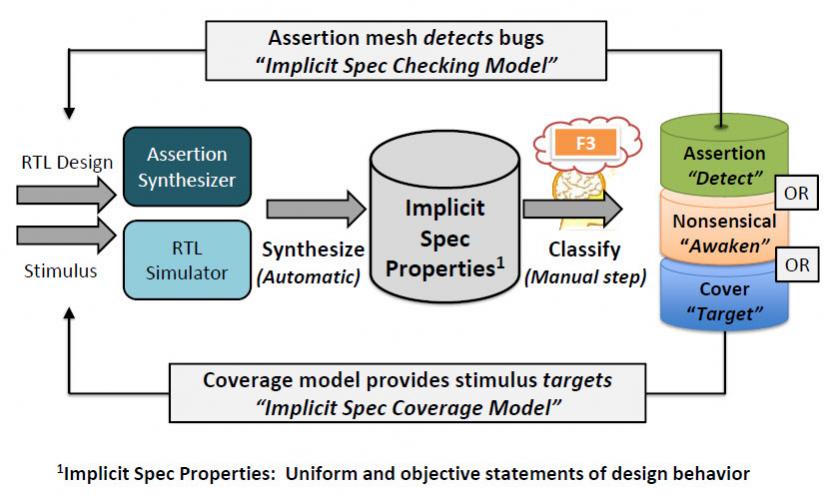Assertion Synthesis is a new tool for verification and design engineers that can be used with simulation or emulation. At DVCon Yuan Lu of Atrenta is presenting a tutorial on Atrenta’s BugScope along with John Henri Jr of Cadence explaining how it helps emulation and Baosheng Wang of AMD discussing their experiences of the product.
Creating an adequate number of high quality assertions and coverage properties is a challenge in any verification plan. Assertion Synthesis takes as input the RTL description of the design and its test environment and automatically generates high quality whitebox assertions and coverage properties in standard language formats such as SVA, PSL and Verilog. Assertion Synthesis enables an automated assertion-based verification methodology that improves design quality and reduces verification overhead.
 Here’s the 5000ft version of what Assertion Synthesis is. BugScope watches the simulation (or emulation, which I think of as a special sort of simulation) of the design and observes its behavior. Based on what it sees, BugScope automatically generates syntactically correct assertions about the design, behaviors that it believes are always true based on the simulation.
Here’s the 5000ft version of what Assertion Synthesis is. BugScope watches the simulation (or emulation, which I think of as a special sort of simulation) of the design and observes its behavior. Based on what it sees, BugScope automatically generates syntactically correct assertions about the design, behaviors that it believes are always true based on the simulation.
The designer and verification engineers can use these assertions in three different ways:
[LIST=1]
All three of these alternatives result in an improved verification process: either more assertions added very cheaply, a coverage hole identified, or a real error in the design.
The DVCon tutorial, which is officially titled Achieving Visibility into the Functional Verification Process using Assertion Synthesis, is on Thursday February 28th from 1.30pm to 5pm in the Donner Ballroom. More details are here.
Share this post via:







Comments
There are no comments yet.
You must register or log in to view/post comments.